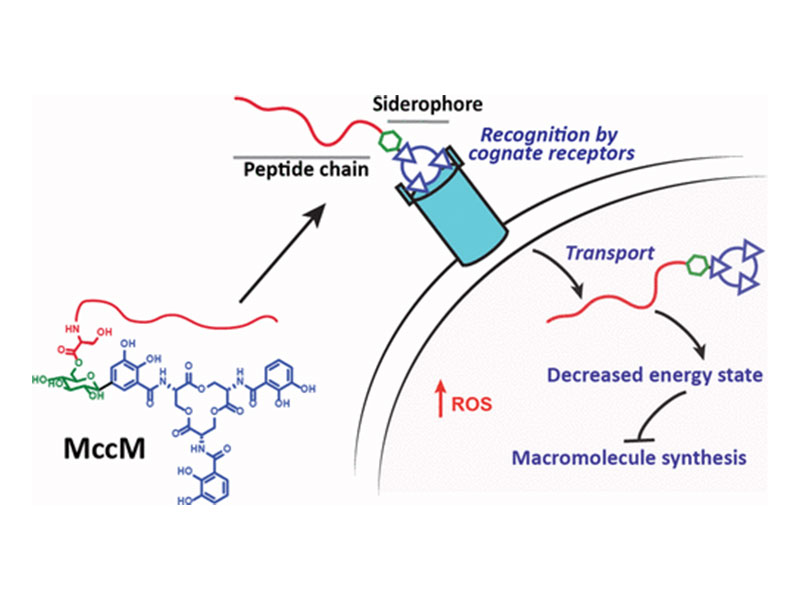
Class IIb Microcin MccM Interferes with Oxidative Phosphorylation in Escherichia coli

Class IIb Microcin MccM Interferes with Oxidative Phosphorylation in Escherichia coli
Kwo-Kwang Abraham Wang* Jupneet Singh John S. AlbinBradley L. Pentelute Elizabeth M. Nolan*
Abstract
Dysbiosis of the human gut microbiota is linked to numerous diseases. Understanding the molecular mechanisms by which microbes interact and compete with one another is required for developing successful strategies to modulate the microbiome. The natural product Microcin M (MccM) consists of a 77-residue bioactive peptide conjugated to a siderophore and is a class II microcin involved in microbial competition with an enigmatic mode-of-action. In this work, we investigated the basis for MccM activity and leveraged bioinformatics to expand the known chemical diversity of class II microcins. We applied automated fast-flow solid phase peptide synthesis coupled with chemoenzymatic chemistry to acquire MccM and demonstrated that its activity was bacteriostatic. We then used our synthetic molecule to ascertain that catecholate siderophore transporters in Escherichia coli K-12 are necessary for MccM import. Once inside the cell, we found that MccM treatment decreased the levels of intracellular ATP and interfered with gene expression. These effects were ameliorated in genetic mutants lacking ATP synthase or in conditions that support substrate-level phosphorylation. Further, we showed that MccM elevated the levels of reactive oxygen species within the target cell. We propose that MccM effects its bacteriostatic activity by decreasing the total energy level of the cell through inhibition of oxidative phosphorylation. Lastly, using genome mining, we bioinformatically identified 171 novel putative class II microcins. Our investigation sheds light on the natural processes involved in microbial competition and provides inspiration, in the form of new molecules, for future therapeutic endeavors.



